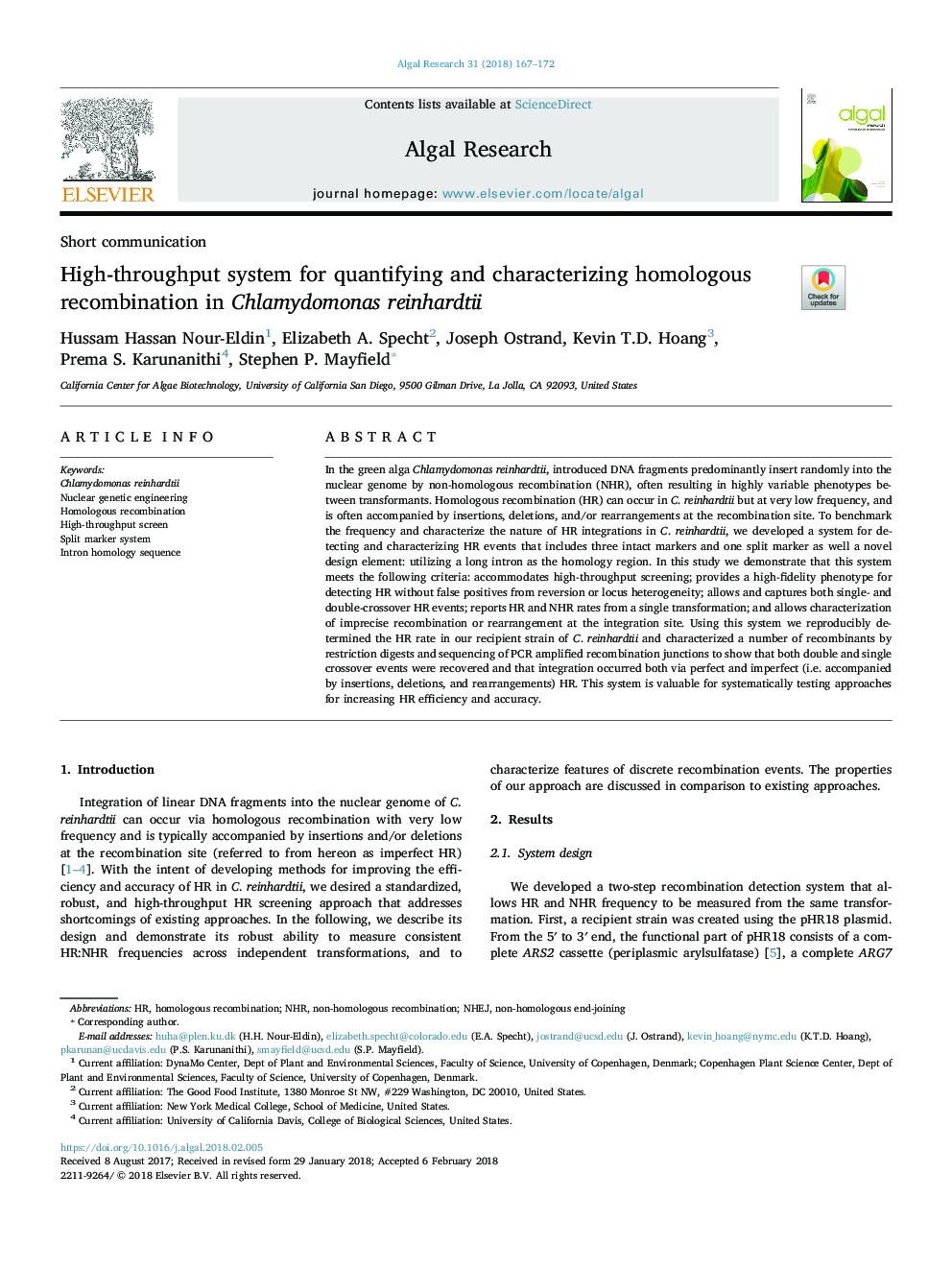| Article ID | Journal | Published Year | Pages | File Type |
|---|---|---|---|---|
| 8085961 | Algal Research | 2018 | 6 Pages |
Abstract
In the green alga Chlamydomonas reinhardtii, introduced DNA fragments predominantly insert randomly into the nuclear genome by non-homologous recombination (NHR), often resulting in highly variable phenotypes between transformants. Homologous recombination (HR) can occur in C. reinhardtii but at very low frequency, and is often accompanied by insertions, deletions, and/or rearrangements at the recombination site. To benchmark the frequency and characterize the nature of HR integrations in C. reinhardtii, we developed a system for detecting and characterizing HR events that includes three intact markers and one split marker as well a novel design element: utilizing a long intron as the homology region. In this study we demonstrate that this system meets the following criteria: accommodates high-throughput screening; provides a high-fidelity phenotype for detecting HR without false positives from reversion or locus heterogeneity; allows and captures both single- and double-crossover HR events; reports HR and NHR rates from a single transformation; and allows characterization of imprecise recombination or rearrangement at the integration site. Using this system we reproducibly determined the HR rate in our recipient strain of C. reinhardtii and characterized a number of recombinants by restriction digests and sequencing of PCR amplified recombination junctions to show that both double and single crossover events were recovered and that integration occurred both via perfect and imperfect (i.e. accompanied by insertions, deletions, and rearrangements) HR. This system is valuable for systematically testing approaches for increasing HR efficiency and accuracy.
Keywords
Related Topics
Physical Sciences and Engineering
Energy
Renewable Energy, Sustainability and the Environment
Authors
Hussam Hassan Nour-Eldin, Elizabeth A. Specht, Joseph Ostrand, Kevin T.D. Hoang, Prema S. Karunanithi, Stephen P. Mayfield,
